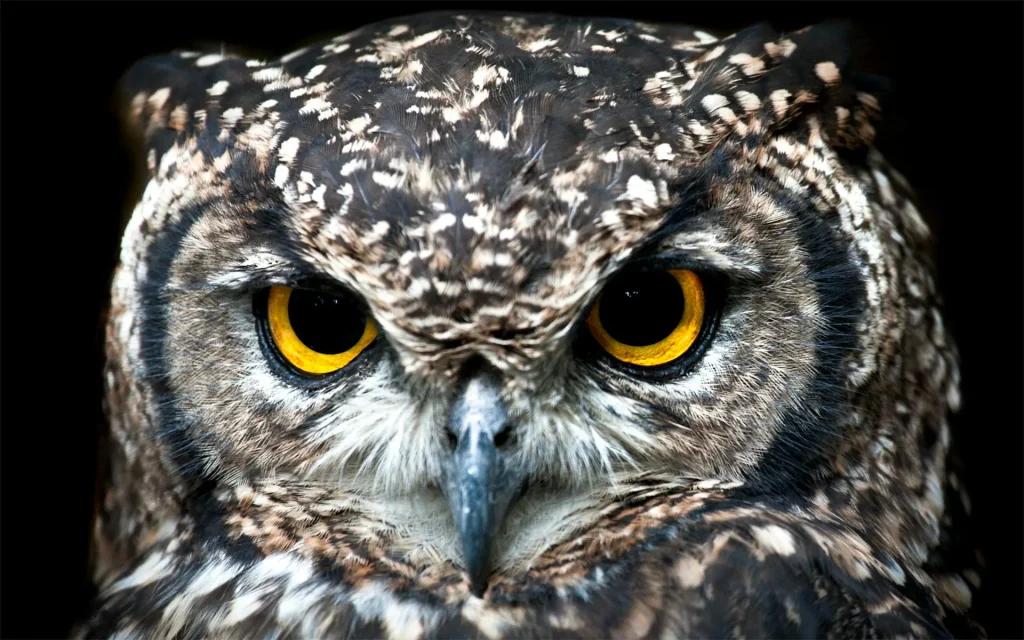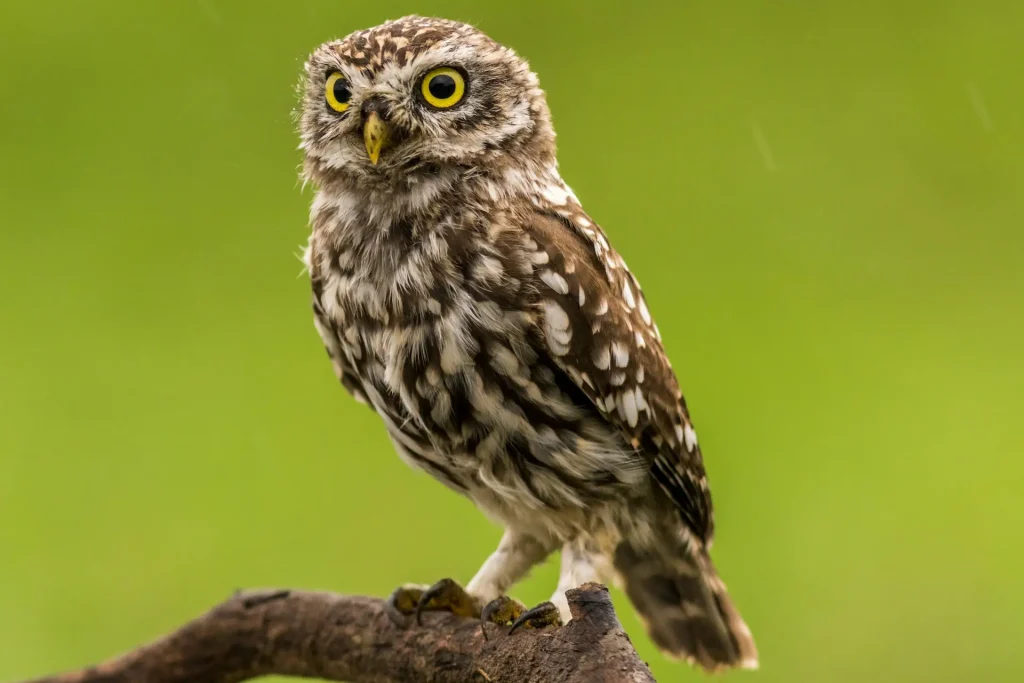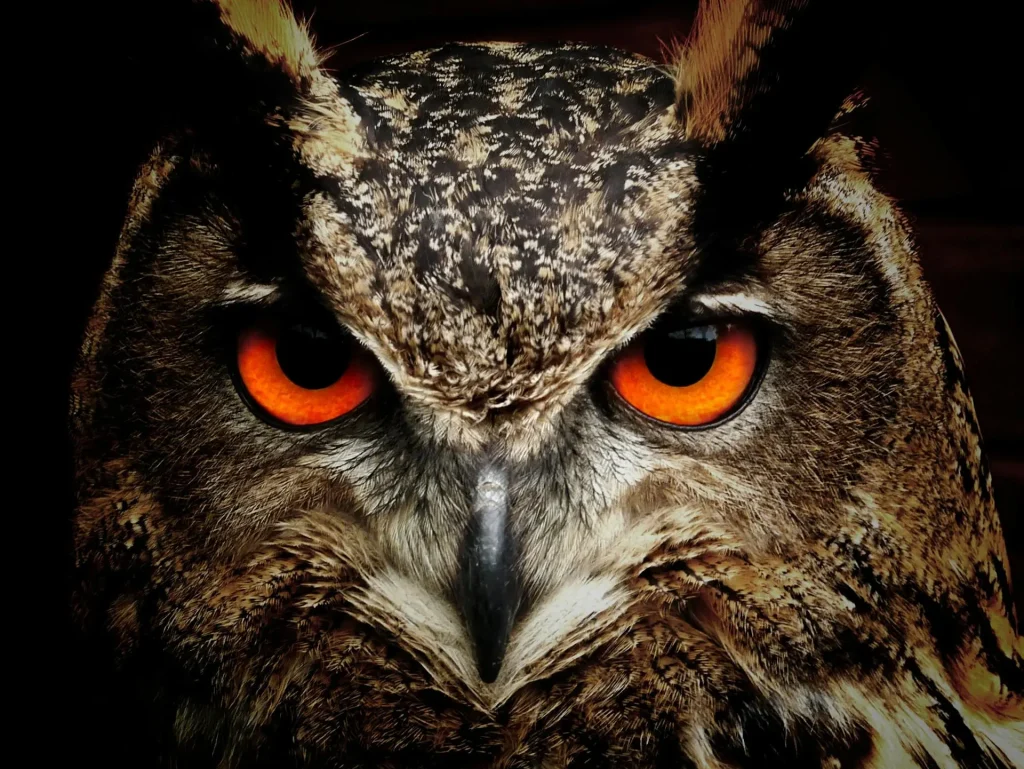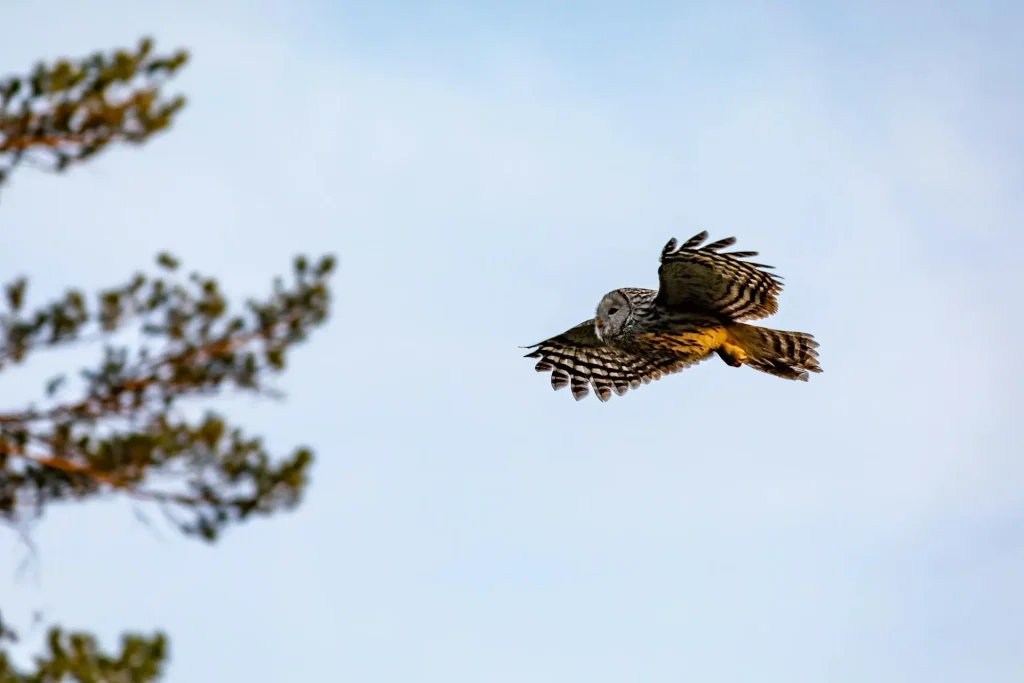The magic and the mystery of owl symbolism has been captivating people for centuries now.
Seen as a carrier of divine messages, a totem of wisdom, transition and protection, and even as a bridge between the worlds, an owl is a remarkable being for sure.
In our fast-paced world, owls invite us to pause, reflect, retain the connection to our true self, utilising the divine wisdom in all aspects.
From Harry Potter’s Hedwig to Merlin’s Archimedes, owls have secured their spot in the popular culture as well.
Join us as we uncover the full meaning behind owl symbolism and why these birds continue to captivate us today.

Photo by Jean van der Meulen
Owl Symbolism
Table of Contents
Owl in Ancient Cultures
Owls were playing a very significant role in various ancient societies. We listed some of the societies below.
Greek mythology
Owls were closely linked to Athena, the goddess of wisdom and war. The little owl, in particular, was her sacred animal. The city of Athens, named after the goddess, even used owl images on its coins. This association firmly established owls as symbols of knowledge, strategy, and insight in Western culture.
Roman culture
Unlike the Greeks, Romans often viewed owls as harbingers of doom. The hoot of an owl was believed to predict death, especially of public figures. However, Romans also had one contrasting belief related to the dead owls warding off evil; it all showing their complex relationship with these birds.
Egyptian hieroglyphs
In ancient Egyptian writing, the owl symbol represented the sound “m” and was associated with death and night. However, Egyptians also saw owls as protectors, guiding souls through the underworld (considered to be a mysterious and supernatural realm where souls go after death. It means that in various mythologies and religious traditions, the afterlife world is below the world of the living, contrasting the modern belief of it being somewhere above us).
Native American traditions
Many Native American tribes held owls in high regard. The Hopi saw owls as guardians of the underworld, while the Ojibwe believed owls were a symbol of both death and rebirth. Some Plains tribes viewed owl feathers as protective charms for warriors.
Celtic lore
In Celtic mythology, owls were often seen as guardians of the underworld and keepers of secrets, representing wisdom and transformation.
Ancient India
In Hindu tradition, the owl is closely linked to Lakshmi, the goddess of wealth and prosperity. The owl serves as Lakshmi’s vahana, which means it’s her animal vehicle or mount. This connection gives the owl a positive meaning in Indian culture, associating it with good fortune and abundance. It’s believed that the owl’s ability to see in the dark symbolizes Lakshmi’s power to guide people towards prosperity, even in difficult times. However, that belief have had a dark twist, and nowadays, there are reported cases of owls being sought after and even sacrificed during Diwali; some people think that such ritual will take away Goddess Lakshmi’s vehicle, forcing her to stay in their homes all year round, and bring fortune.
Japanese folklore
In Japan, owls are associated with the positivity and good fortune. They are known as fukurō (fukurou) – the word carries a combined meaning of luck, no suffering, and protection.

Photo by Zdeněk Macháček on Unsplash
Owl Symbolism (Owl Symbol Meaning)
Owls have been representing various ideas and qualities across cultures, such as:
- Wisdom: Perhaps the most common association, owls symbolize intelligence and knowledge. Their large eyes and quiet observation suggest deep thinking and understanding.
- Wisdom in darkness: Owls suggest the ability to find clarity in confusing or dark times, both literally and metaphorically.
- Silence: Their silent flight represents the power of silence and careful observation.
- Intuition: Owls’ ability to see in the dark links them to inner vision and intuitive knowledge. They represent “seeing beyond the obvious”.
- Transition: In many cultures, owls symbolize change or transition, often related to death but also to important life changes.
- Independence: Owls are solitary hunters, making them symbols of self-reliance and independence.
- Protection: Some cultures see owls as protective spirits, watching over people during vulnerable night hours.
- Bad luck: In contrast, some societies view owls as bearers of misfortune or ill omens, likely due to their association with darkness and death.
- Mystery: Owls are connected to the unknown and the mysterious aspects of life.
- Feminine power: In some traditions, owls are linked to feminine energy and the moon.
Owl in Spiritual and Esoteric Traditions
Owls play significant roles in various spiritual and esoteric beliefs as well, such as:
- Shamanism: Many shamanic traditions see owls as spirit guides. They’re believed to help shamans travel between the physical and spirit worlds.
- Meditation and mindfulness: Owls represent the calm, watchful state sought in meditation practices. Their silent presence symbolizes mindful awareness.
- Wicca and modern paganism: In these traditions, owls are often associated with the goddess, particularly in her crone aspect. They’re seen as helpers in magic and divination.
- Native American spirituality: Some tribes believe owls carry messages from the spirit world. They’re often associated with prophecy and clairvoyance.
- Feng Shui: In this Chinese practice, owl figurines are sometimes used to ward off negative energy and invite wisdom into a space.
- Astral projection: Due to their association with night and silent flight, owls are linked to out-of-body experiences and astral travel in some esoteric traditions.
- Theosophy: This spiritual philosophy sees owls as symbols of hidden wisdom and the ability to see through illusions.
- Dream interpretation: Dreaming of owls is often interpreted as a sign of gaining wisdom or intuitive insights. The dream can sometime come as a sign of an upcoming transition, big change in life.
So, in these contexts, owls are generally seen as powerful spiritual allies, offering guidance, protection, and access to hidden knowledge.
Owl as a Spirit Animal (Owl Spiritual Meaning)
In many spiritual traditions, animals are believed to act as guides or messengers, offering wisdom and support. It further translates to having a group of spirit animals and interpretations tied to them. In this case, the owl as a spirit animal is said to indicate the following:
- Intuition: Those who identify with the owl spirit animal may have strong intuitive abilities and should trust their inner voice.
- Seeing through deception: Owls symbolize the ability to see what others miss, encouraging people to look beyond surface appearances.
- Wisdom in darkness: The owl spirit animal represents finding knowledge and insight during difficult or confusing times.
- Silent observation: Owls teach the value of watching and listening before acting or speaking.
- Life transitions: As creatures of the night, owls can symbolize guidance through major life changes or spiritual transformations.
- Connection to the mystical: Owl spirit animals may indicate a natural affinity for the unseen or supernatural realms.
- Shadow work: Owls encourage exploring one’s hidden self and confronting personal fears.
- Heightened senses: People with owl as their spirit animal might be especially perceptive or sensitive to their surroundings.
If the owl appears as your spirit animal, it may be inviting you to trust your instincts, embrace your intuitive wisdom, and navigate life’s mysteries with confidence. The owl reminds us that sometimes, the most profound insights come when we’re willing to explore the darkness, both within ourselves and in the world around us.

Photo by Pixabay
Owl Eye Color
Owls’ eyes and their extraordinary colors are a story for itself. Now, what do these different colors mean?
- Yellow eyes are characteristic for the day-active species.
- Orange eyes indicate that the species is active at dusk and dawn.
- Dark brown or black eyes indicate the night-active species.
Modern Interpretations and Cultural References
In today’s world, owls continue to captivate our imagination:
- Literature: Owls are present in books like Harry Potter, where they deliver mail and serve as magical companions.
- Movies and TV: Animated films like Legend of the Guardians showcase owls as heroes, while documentaries highlight their real-life behaviors.
- Logo design: Many educational institutions and businesses use owl imagery in their logos to represent wisdom and knowledge. Chances are you’ve seen the Duolingo’s owl logo and you’ve heard about the stories and jokes surrounding it.
- Social media: Owl memes and GIFs are popular, often representing them as cute, wise, or comically judgmental creatures.
- Fashion and decor: Owl motifs are common in clothing, jewelry, and home decorations, appealing to those who admire their symbolic meaning or aesthetic.
- Conservation efforts: Increased awareness of owl species has led to more conservation initiatives, linking owls to environmental consciousness.
- Urban legends: Stories of owls as omens or messengers continue to circulate, blending ancient beliefs with modern storytelling.
- Emoji and digital communication: The owl emoji (🦉) is often used to represent wisdom, night time, or studying.
- Mascots: Some schools and sports teams use owls as mascots to embody wisdom and vigilance.
- New Age spirituality: Owls are popular symbols in modern spiritual practices, often representing intuition and spiritual awakening.

Photo by Erik Karits
___________
This concludes our exploration of owl symbolism, for now. We hope you liked the article and maybe even learned something new from it.
If you’re interested in learning more about other symbols, we invite you to check out our Symbolism blog posts category.
More Articles
- Agartha: The Mystery and The Hollow Earth Theory
- Roots of Ascension: Fascinating Religious and Spiritual Origins
- Ophiuchus: The 13th Sign of The Zodiac… or is it?
